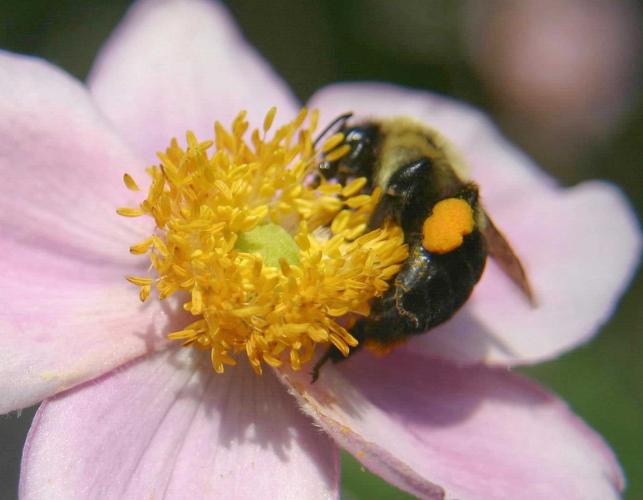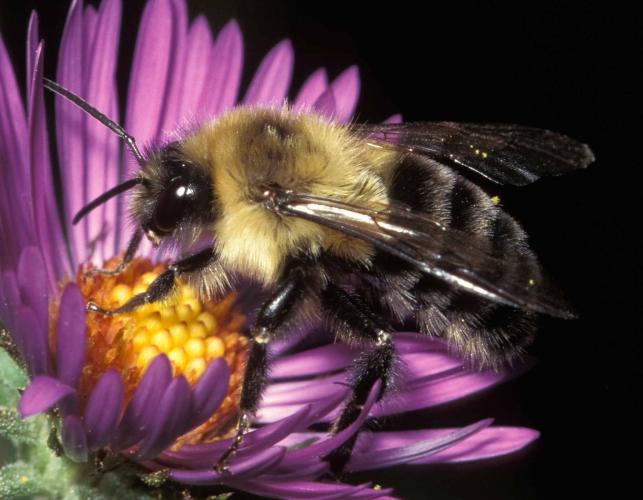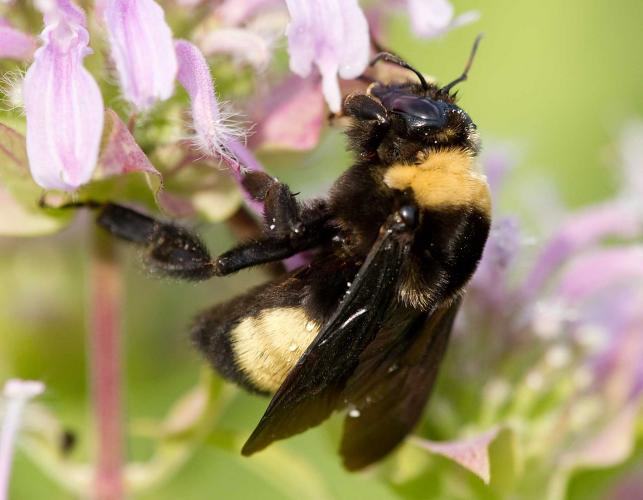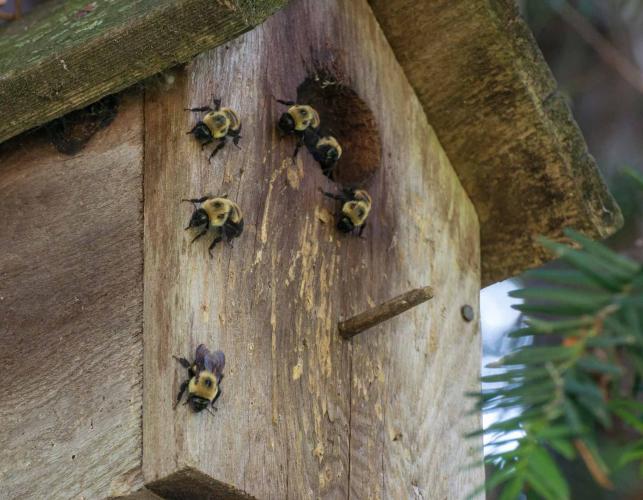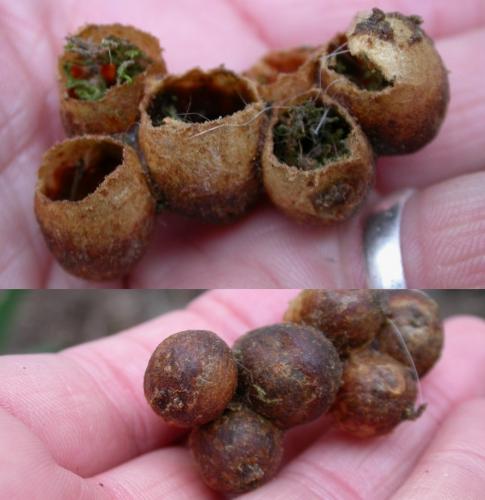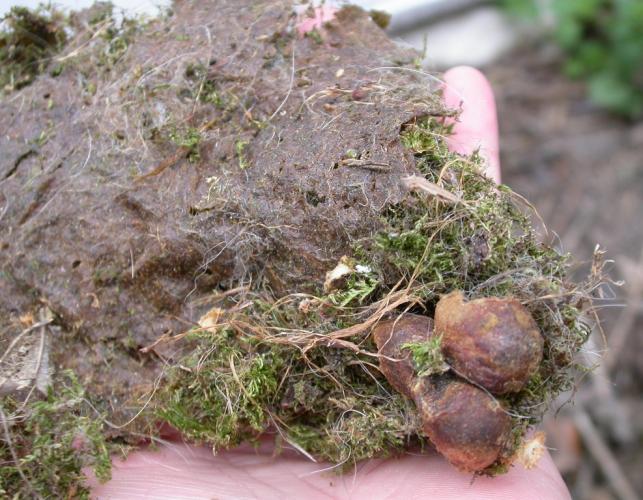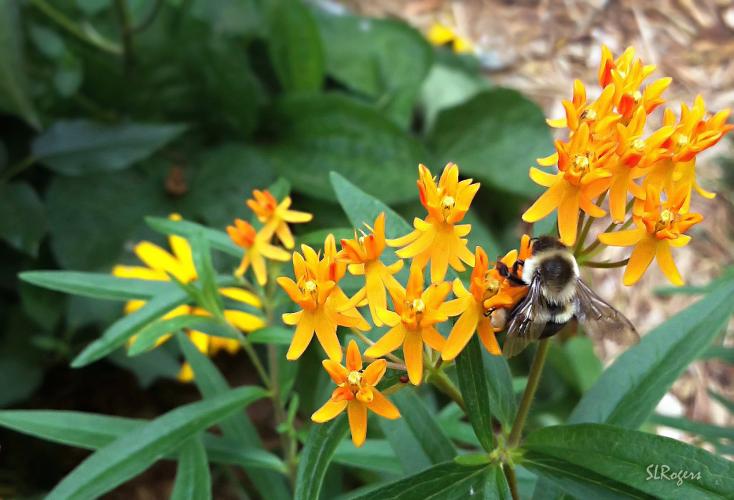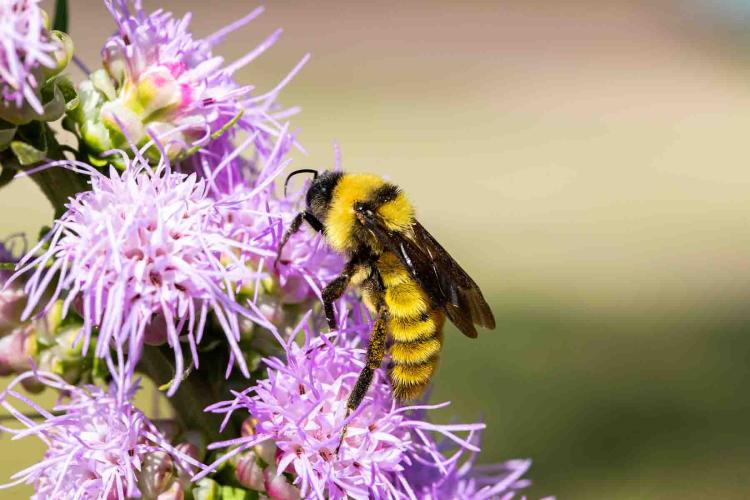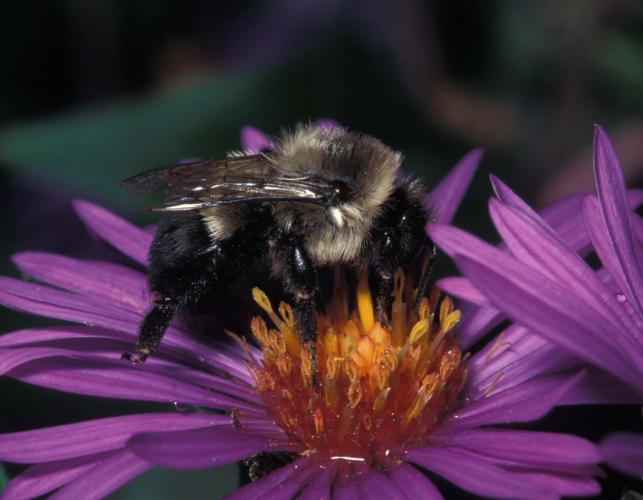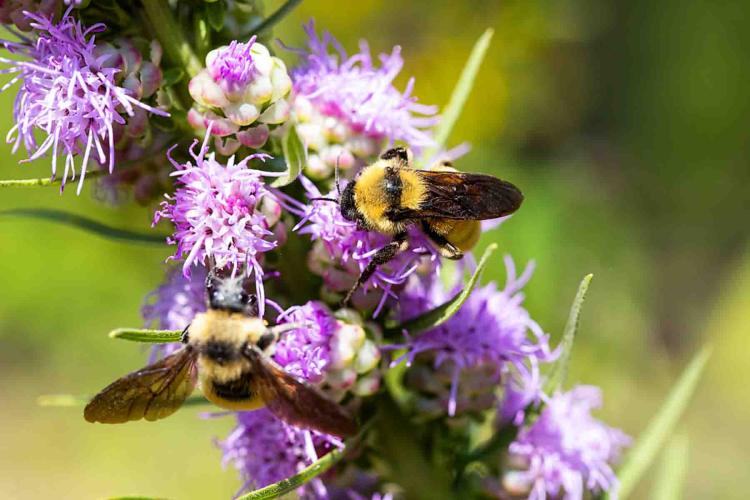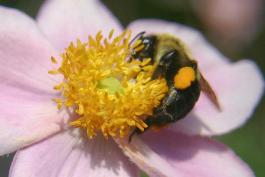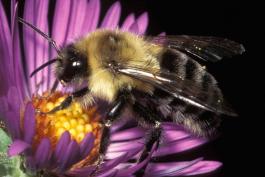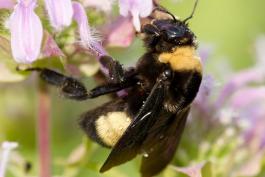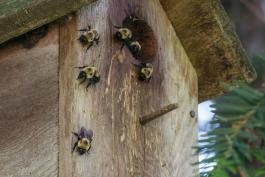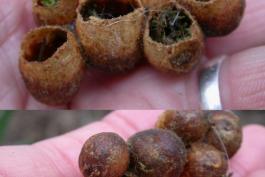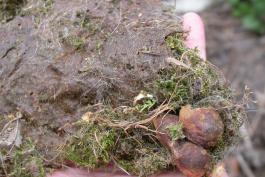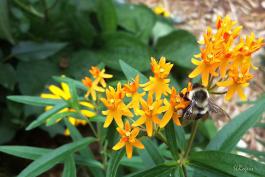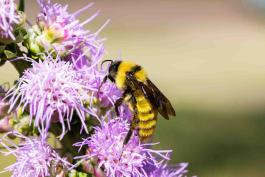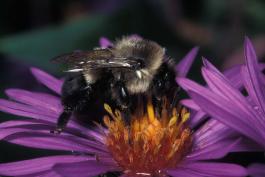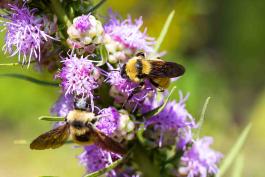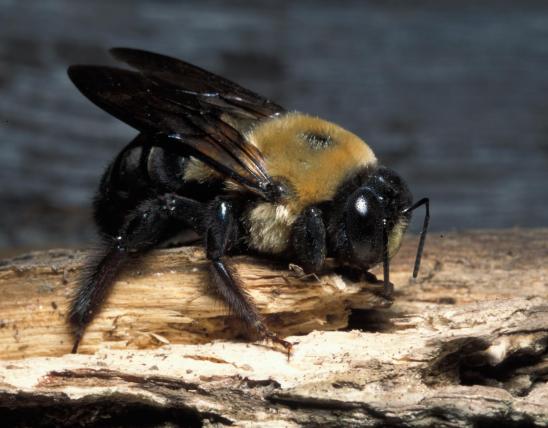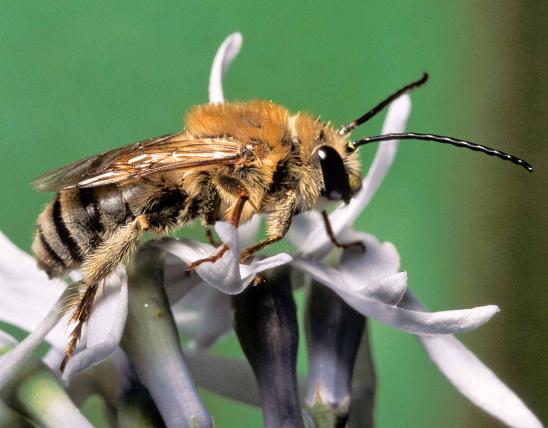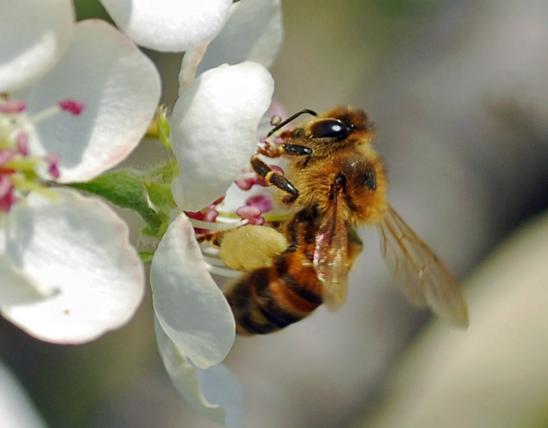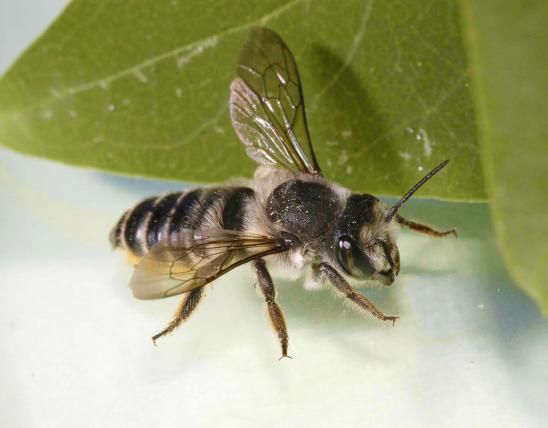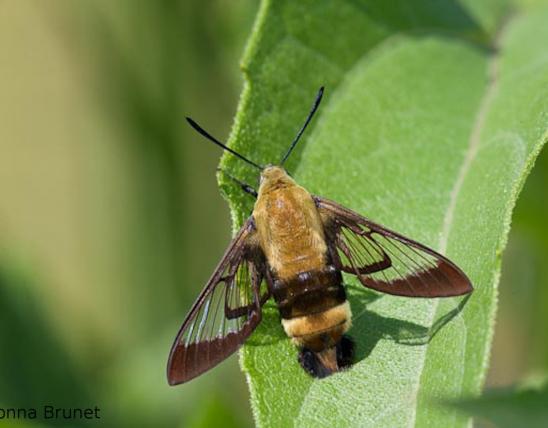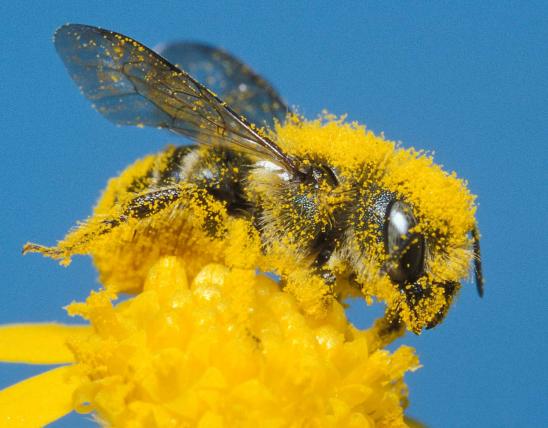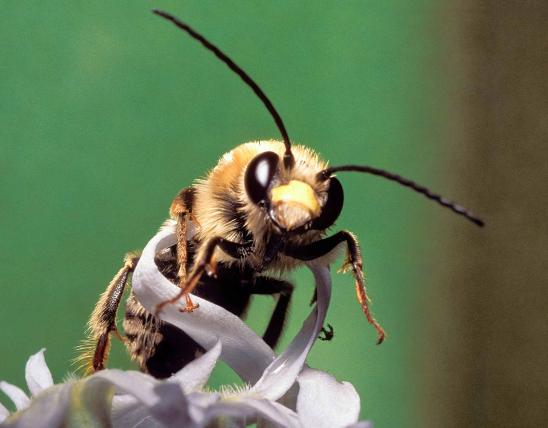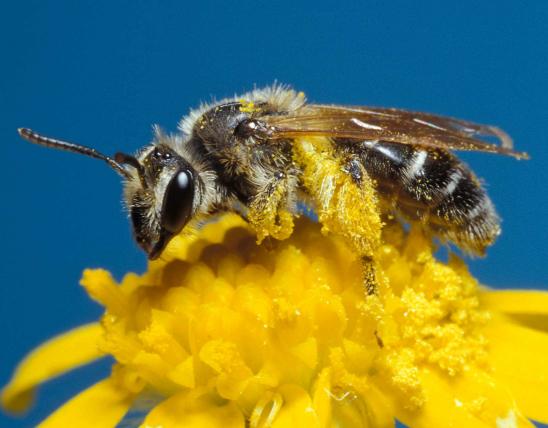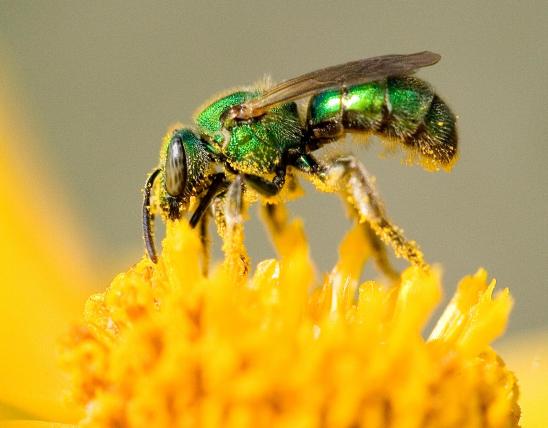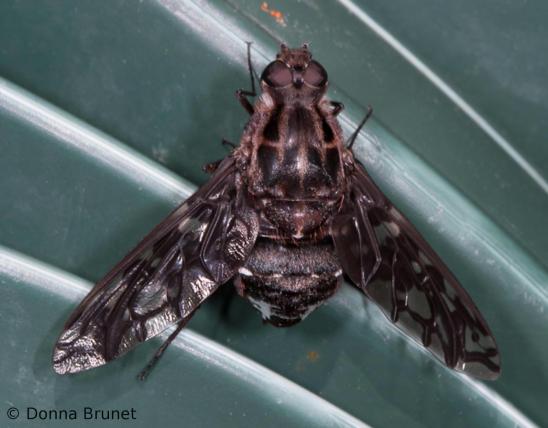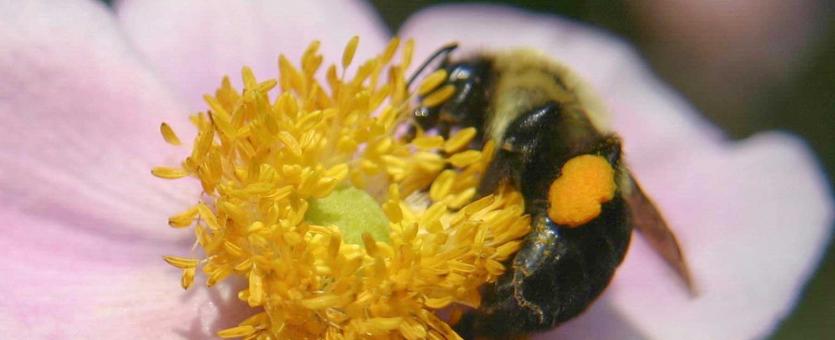
Bumblebees are large, fuzzy or hairy bees with a black and yellow (sometimes orange), usually banded, coloration. Bumblebees (genus Bombus) always have some fuzz on the abdomen. Females have pollen baskets on the last pair of legs.
At least six species of bumblebees occur in Missouri. Entomologists and dedicated amateurs use details of wing venation and other structural fine points to identify the different species in this genus.
Similar species: Carpenter bees (Xylocopa spp.), which carve nest holes in dead wood, are similar in size, shape, and color, but they have shiny, hairless black abdomens, while bumblebees have fuzz on their yellow-and-black-banded abdomens. There are many species of bees that you have probably never heard of. Also, there are many flies and beetles that have yellow-and-black patterns that mimic the warning colors of bees and wasps. Hummingbird moths and other sphinx moths also mimic bumblebees.
Learn more about bumblebees and other apid bees (family Apidae) on their family page.
Length: about ½ to 1 inch.

Statewide.
Habitat and Conservation
In the day, bumblebees are commonly seen foraging among flowers for nectar and pollen. Bumblebees often sleep at night by clinging to the underside of a leaf.
The buzzing sound bumblebees make is caused by vibrations of the wing muscles inside the insect's body, and not by the wings themselves.
Food
Adults eat nectar, and adults feed pollen and honey to the young. Honey and pollen may be stored in vacant nest cells.
Natural history writer Edwin Way Teale described the specialized structure (the corbicula) on the hind legs of bumblebees and honeybees as "baskets for carrying pollen home from the fields."
Despite their many similarities to honeybees, bumblebees don't overwinter as a hive, so they don't stockpile much honey.
Status
Although bumblebees are social insects and are capable of stinging, they do not aggressively defend their colonies like some species of wasps or like Africanized honeybees. Many observers have remarked on the easy-going nature of bumblebees, which allow people to watch as they go about their nesting activities.
Like most other native pollinators, many bumblebee species are declining, which is deeply concerning because of their essential role in nature and in agriculture. Learn what you can do to help native bee populations recover.
At least two bumblebee species have been listed as Missouri species of conservation concern:
- The yellow bumblebee, also called the golden northern bumblebee (Bombus fervidus), is listed as critically imperiled in our state, meaning that is in peril of being extirpated from within our borders.
- The rusty belt bumblebee, also called the rusty-patched bumblebee (Bombus affinis), has been placed on the federal endangered species list. It is a key pollinator of the wildflower called Dutchman's breeches (Dicentra cucullaria), whose oddly shaped flowers other bees find difficult to pollinate.
Life Cycle
Bumblebees usually nest in cavities below ground (frequently in former rodent burrows), but nests may also be in brush piles, trash heaps, bird houses, and so on. They are rarely in direct sun.
In spring, a single fertilized female (queen) finds a suitable nest site and builds in it a large, irregular cell of wax and pollen and stocks it with pollen and nectar. She lays several eggs in the cell; the queen then enlarges the nest and supplies the grublike young with additional food. She speeds the development of her eggs and young by incubating them. They will become workers and take over the pollen and nectar collecting, feeding additional young, and attending to other nest duties.
Later in the season, the queen lays eggs for queens and males (drones); in the fall, these leave the colony to find mates.
In our area, the whole colony dies during the winter. Only young queens survive the winter by hibernating in the ground. The next spring, these fertilized queens begin a new colony.
Nests rarely have more than a hundred workers at a time, and unlike honeybees, bumblebee hives don't usually survive the winter.
Human Connections
Bumblebees are important pollinators, which is significant for humans agriculturally, horticulturally, and environmentally. Some plants can only be pollinated by bumblebees. Red clover, an important fodder and traditional medicinal plant, is rarely pollinated by other bees.
The Missouri Bumble Bee Atlas is a statewide community science project aimed at tracking and conserving Missouri's native bumble bees. Learn how you can participate in this program, and download a free training packet, including a quick identification guide to Missouri's bumblebees, on its website. MDC is one of the sponsors of this citizen-science initiative.
Bumblebees are capable of stinging, if molested or if their nest is endangered, but you need not fear them; they are not aggressive.
Considering that many bumblebees are declining, if you find a bumblebee nest on your property, leave them alone and consider yourself lucky. Watch them over the course of the season; take pictures!
A common myth, often repeated by motivational speakers, maintains that bumblebee flight "defies the laws of physics." That notion was based on the idea that insects flap their wings up and down; instead, however, bees sweep them back and forth, changing the angles, something like helicopter or hummingbird flight. Even though bee flight does not defy physics, you can still be inspired by it.
Ecosystem Connections
Bumblebees, like many other pollinators, have certain plants that depend only on them for pollination. In fact, bumblebees are one of the main pollinators that use a technique called buzz pollination to force the anthers of flowers to release pollen. These are usually tubular flowers with small openings, and the pollen is usually stuck firmly on the anthers. The bumblebee or other buzz pollinator rapidly vibrates its flight muscles, shaking pollen from the anthers. With the pollen attached to their bodies, they visit another flower and cross-pollinate it. Honeybees cannot accomplish buzz pollination. Southern wild senna, partridge pea, and closed (bottle) gentian are just a few Missouri wildflowers that require buzz pollination.
Bumblebees have many other interrelationships with organisms that most of us are scarcely aware of — their predators, their parasites, and the many non-stinging insects that can survive, in part, because they mimic them. All of these have their own roles in the chain of life.
